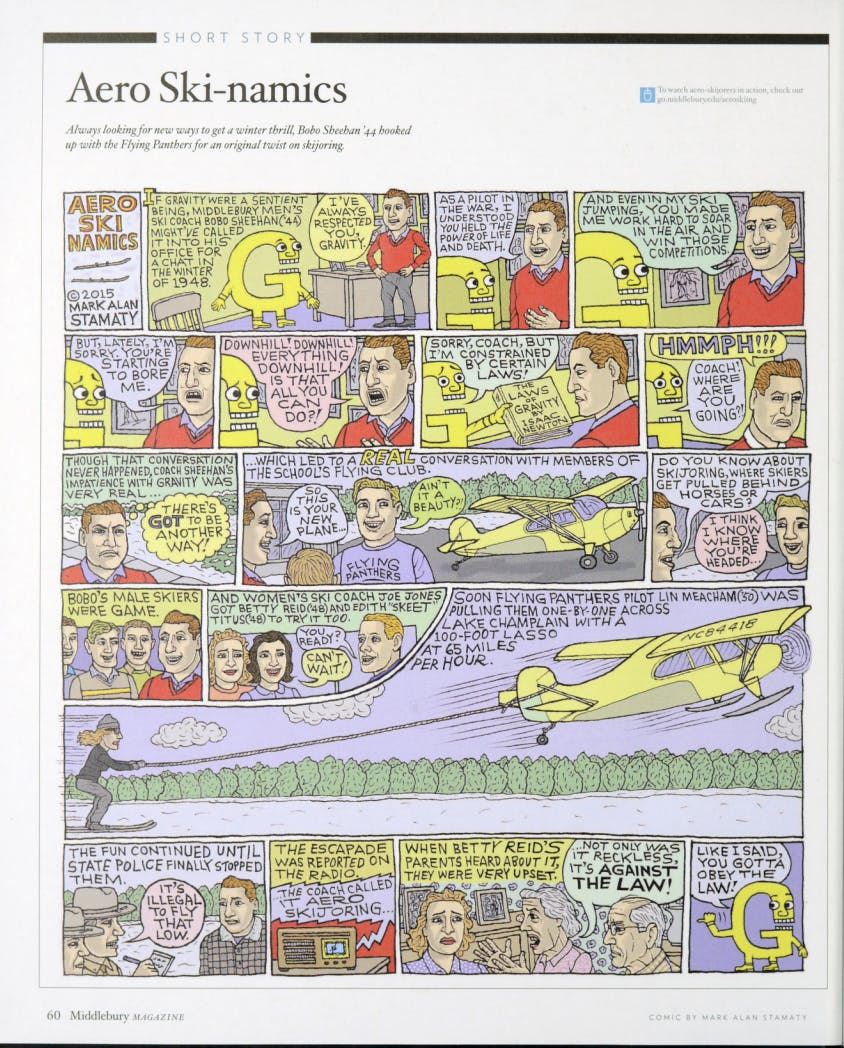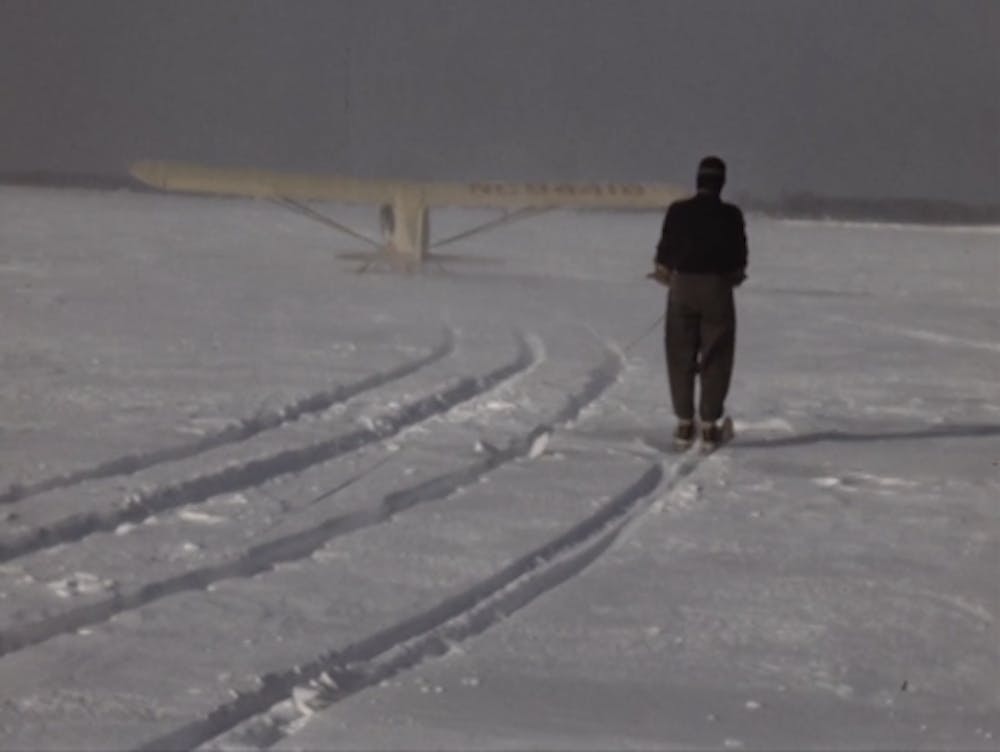The first snow of the season came to Middlebury on Nov. 1, and despite this year’s unpredictable weather, there has been an overall drop in temperature as we get closer to winter. But as the temperature drops, our hopes for snow and the prospect of winter sports begin to rise. We see the white dusting on our trees, stark and sparkling. We watch the still-green grass become blanketed and the color wiped away. Ice begins to appear at the edges of Lake Champlain and Lake Dunmore. The flurries linger outside our classroom windows — distracting and exciting. Public Safety tells us to close our windows over break: the pipes might freeze! Some begin to imagine carving tracks through the hills and — onto Lake Champlain?
You might be questioning why students come far and wide to such a frigid, desolate landscape. Why leave behind suburbia, beaches, oceans and city lights? I’ll tell you why: skiing! By enrolling at Middlebury College, students are volunteering to endure cold, snowy winters, and with the low temperatures inevitably comes a sometimes overwhelmingly adventurous ski-culture.
But some of us are sick of skiers constantly bragging about the way they “shredded that gnar” or “tore up that bend.” We can stand it no longer! We need a new winter sport to take hold of our students and give them purpose.
If you are tired of Middlebury’s downhill and cross country ski culture or are looking to spice up your athletic talents, look no further: Skijoring is a term taken from the Norwegian word “skikjøring” that describes the form of transport in which a person on skis is attached to a horse or other animal and is pulled along behind them. Skijoring gained popularity and progressed from a mode of transport to a world-renowned competitive sport, debuting in the Olympics in 1928 with horseback riders pulling a skier along behind them.

In the mid 1900s, Middlebury not only had a ski team, but also, according to Middlebury Special Collections, a flying club: the Flying Panthers. Men’s ski coach Robert “Bobo” Sheehan ’44 saw an opportunity for something new. Skijoring had been known to develop from skiers being pulled by animals or land-based motor vehicles, but with the Flying Panthers’s access to their very own plane, Sheehan created a sport he called “aero-skijoring.”
Lake Champlain, which at the time froze to a much greater extent than it does now due to climate change, offered a large and flat area such that a small plane could use it as a take off and landing point. Per Sheehan’s request, the Flying Panthers, who normally practiced at the Middlebury State Airport, used Lake Champlain to offer a fun alternative from cross-country or downhill skiing.
Much of the men’s ski team, as well as a couple of members of the women’s ski team, showed up for the debut of this new sport Sheehan had created. One at a time they would attach themselves to the plane with a 100-foot lasso. The plane, piloted by Flying Panthers member Lin Meacham ’50, would build speed and eventually lift off the lake, reaching a speed of over 65 miles per hour.
This new sport, despite its up-and-coming promise, was not meant to be. Vermont State Police arrived on the scene and deemed the whole thing “illegal.” Apparently, planes are not meant to be flown only ten feet off the ground, and skiers are not meant to be attached to them. A radio report got some of the daring skiers in trouble with their parents, but no harm came to anyone — except to the sport of aero-skijoring, which, sadly, was over before it had really begun.
Clearly, Sheehan had developed something genius that the world was not yet ready for. Only one question remains: When will it be ready?




